Mexico is renowned as a premier destination for diving enthusiasts from around the globe.
Whether you are a novice diver eager to explore the beauty beneath the waves or one of the experienced divers seeking new and exciting dive sites, this article is going to help you maximize your diving experience in Mexico.
Contents
Exploring Mexico’s Caribbean coast
The Caribbean coast of Mexico offers a wealth of diving experiences, from exploring pristine reefs and cenotes to encountering remarkable marine life such as whale sharks.
Whether you seek vibrant coral reefs or thrilling encounters with marine giants, this region has it all.
The Mesoamerican Barrier Reef System
Along the Caribbean coast of Mexico lies the Mesoamerican Barrier Reef System, the second-largest coral reef system in the world. Stretching over 1,000 kilometers, this underwater marvel is home to a stunning array of marine species and offers an unforgettable diving experience.
The crystal-clear turquoise waters and the intricate and colorful coral reefs create a vibrant and thriving ecosystem that divers can explore.
Cozumel: pristine reefs and best scuba diving in Mexico
Cozumel, an island located just off the Yucatan Peninsula, is renowned as a world-class dive site. The island is surrounded by a series of breathtaking coral reefs that attract people from all corners of the globe for scuba diving.
The reefs are teeming with an incredible diversity of marine life, including colorful tropical fish, turtles, eagle rays, bull sharks, and even the occasional sighting of nurse sharks. The underwater visibility is exceptional, allowing divers to fully immerse themselves in the beauty of this underwater paradise.
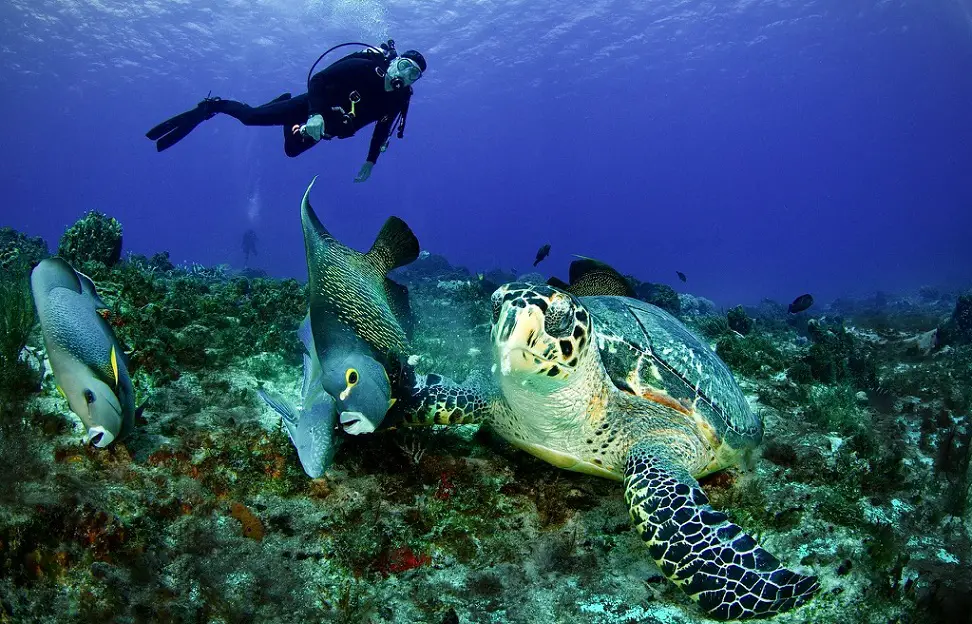
Cancun and Playa del Carmen: cenotes and reef diving
In addition to its stunning beaches, Cancun and Playa del Carmen offer an extraordinary diving experience, thanks to their proximity to mesmerizing cenotes. Diving in Playa del Carmen provides a unique opportunity to explore awe-inspiring subterranean landscapes adorned with stalactites and stalagmites.
For those who prefer reef diving, the Mesoamerican Barrier Reef near Playa del Carmen offers an abundance of dive site options to discover, with its vibrant coral gardens and diverse marine life, from fish to bull sharks and eagle rays.
From November to March, bull sharks gather in the warm waters of Playa del Carmen, providing divers with the chance to observe them up close during bull shark diving.

Isla Mujeres: whale shark encounters
Isla Mujeres dive site, a small island located off the coast of Cancun, is famous for its incredible encounters with gentle giants — the whale sharks.
Every year, from May to September, these magnificent creatures migrate to the warm waters around Isla Mujeres, providing an extraordinary opportunity for divers to swim alongside them.
Witnessing the sheer size and grace of these majestic creatures up close is an awe-inspiring experience that should not be missed by any diving enthusiast.
Unveiling Mexico’s Pacific coast
Mexico’s Pacific coast presents divers with a diverse range of experiences.
From witnessing whale migrations in Baja California to encountering pelagic species at the Socorro Islands, the Pacific waters of Mexico hold incredible wonders.
Baja California: diving with sea lions and whale migration
Baja California, located on Mexico’s Pacific coast, offers exceptional diving opportunities. One of the highlights is diving with playful sea lions in places like the Sea of Cortez and the Gulf of California.
These curious and friendly creatures often interact with divers, creating unforgettable experiences. Additionally, Baja California is a prime dive site for cage diving or witnessing the eagle rays, manta rays, and annual whale migration.
From December to April, humpback whales, gray whales, and other majestic species pass through the waters of Baja California, providing breathtaking encounters.
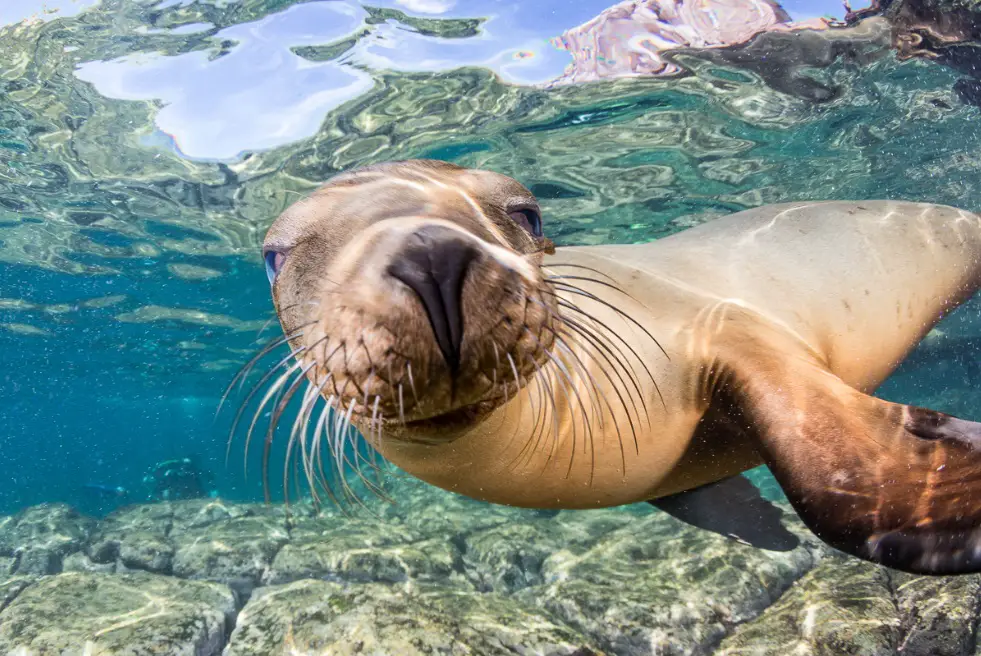
Socorro Islands: a paradise for pelagic encounters
The Socorro Islands, also known as the Revillagigedo Archipelago, are a remote diving destination in the Pacific Ocean. This volcanic archipelago is a mecca for pelagic encounters, offering thrilling experiences with large marine species.
Divers have the chance to swim alongside giant manta rays, dolphins, sharks (including hammerheads and whale sharks), and even the elusive humpback whales.
The crystal-clear waters and abundance of marine life make the Socorro Islands a dream dive site for adventurous divers.
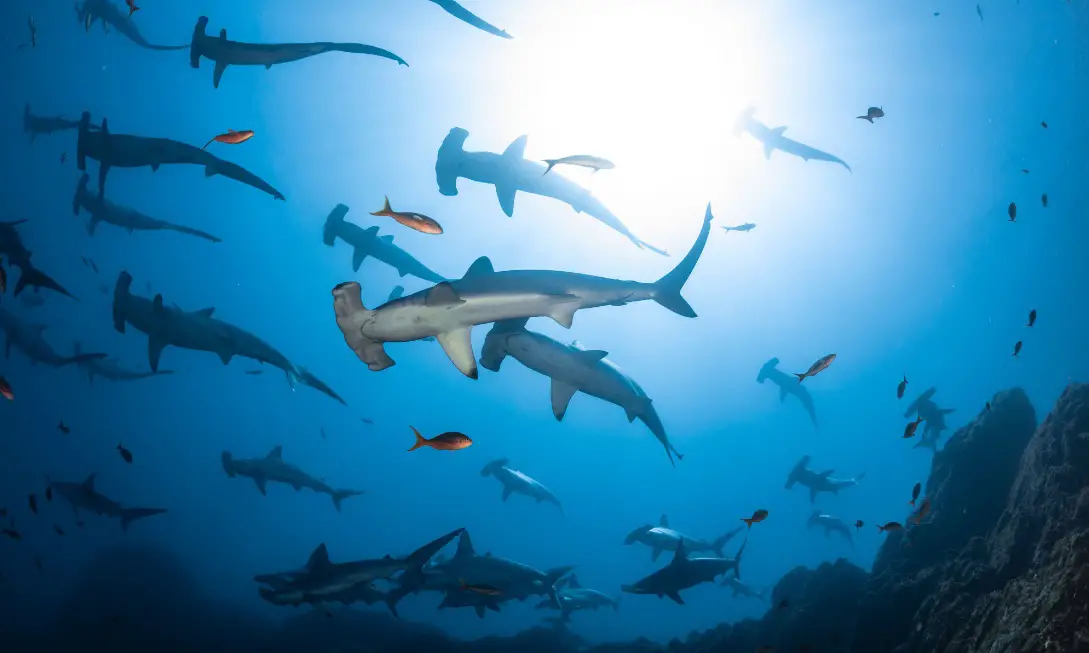
Along the stunning Riviera Nayarit, divers can discover hidden gems and explore diverse marine ecosystems. The region boasts a range of dive sites, including rocky reefs, underwater caves, and vibrant coral gardens.
The warm waters are home to a plethora of marine species, from colorful fish to sea turtles and giant manta rays. With its picturesque coastline and lesser-known diving spots, Riviera Nayarit offers a tranquil and rewarding diving experience away from the crowds.
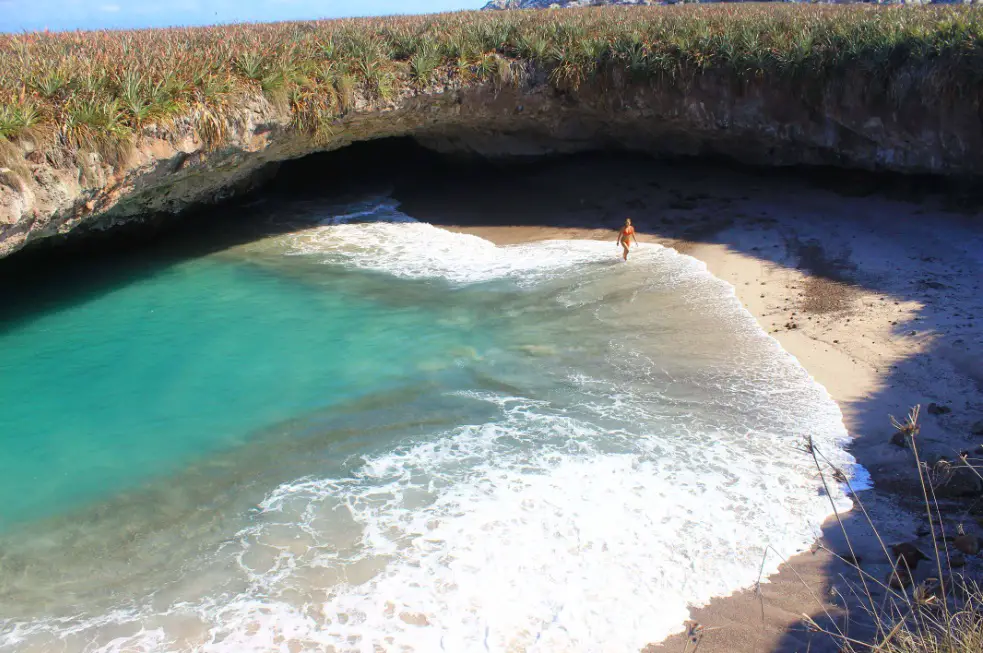
Cabo San Lucas: underwater rock formations and shipwrecks
Cabo San Lucas, located at the tip of the Baja California Peninsula, offers an exciting mix of underwater landscapes and intriguing dive sites.
Cabo San Lucas is admired for its impressive rock formations, including underwater cliffs and canyons that create a visually stunning backdrop for divers. Exploring the depths near Cabo San Lucas, divers may also encounter sunken shipwrecks, adding an element of history and adventure to their underwater explorations.
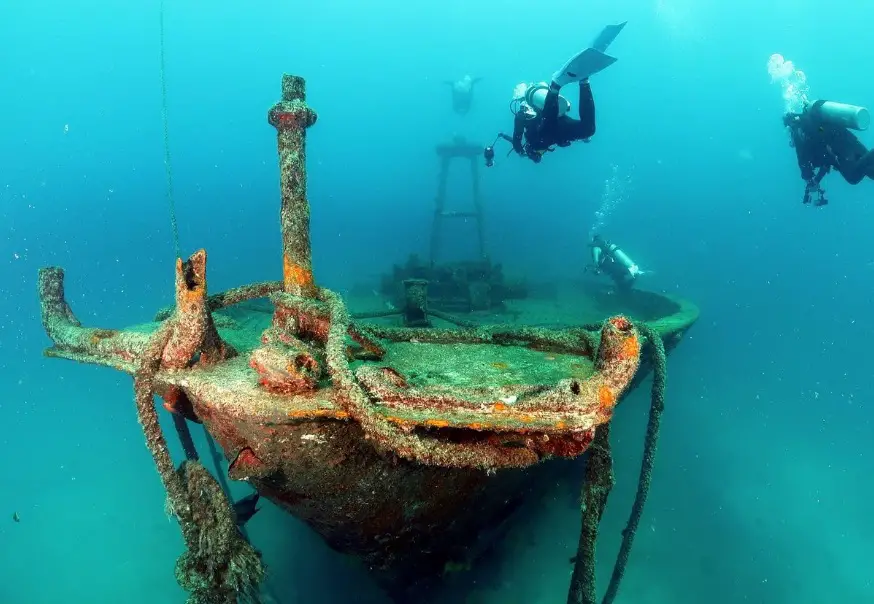
The enigmatic cenotes of the Yucatan Peninsula
The cenotes of the Yucatan Peninsula provide divers with an enchanting and otherworldly experience. From exploring the labyrinthine cave systems of Dos Ojos to swimming in the crystal-clear waters of Gran Cenote, these cenotes offer a unique glimpse into an underground world.
The mesmerizing descent into the mysterious “Underwater River” of Cenote Angelita adds an extra layer of intrigue and adventure. Diving in these cenotes allows divers to witness the beauty and geological wonders hidden beneath the surface, leaving them with lasting memories of their Yucatan Peninsula diving expedition.
Significance of cenotes
Cenotes hold a special place in the diving world and are a unique natural feature found primarily in the Yucatan Peninsula of Mexico. These natural sinkholes are formed when the limestone bedrock collapses, revealing a hidden world of underground rivers and caves.
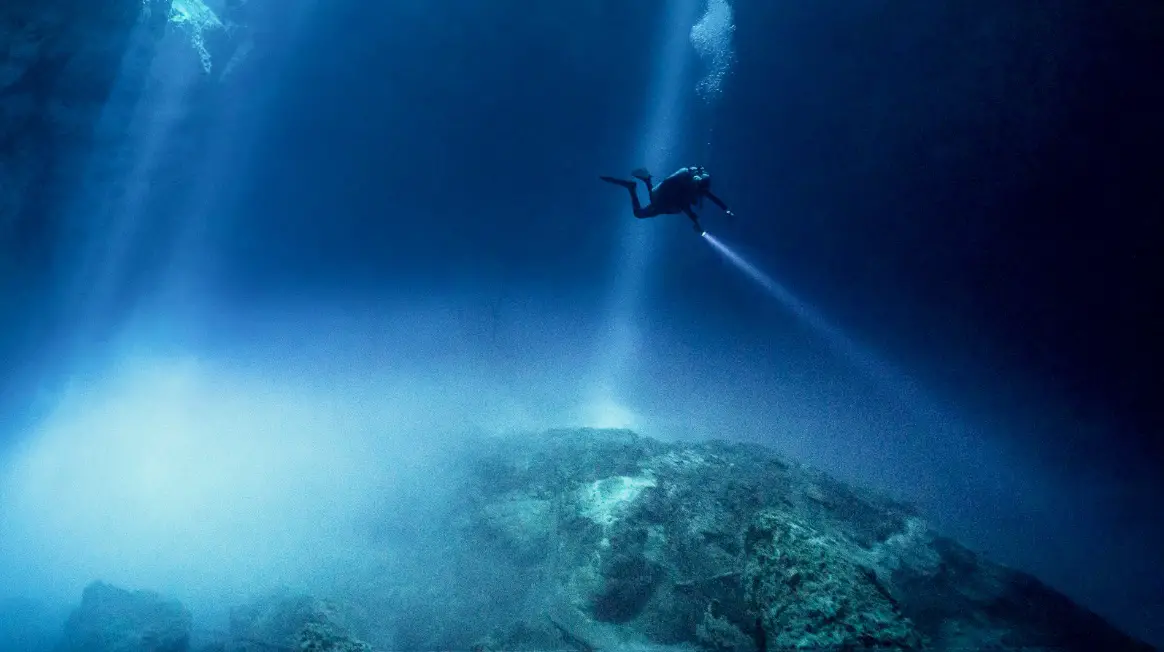
Cenotes have significant cultural and ecological importance as they were considered sacred by the ancient Mayan civilization, serving as a vital water source and even used for ceremonial purposes.
Dos Ojos Cenote: an otherworldly cave diving experience
One of the most famous cenotes for diving is Dos Ojos, which translates to “Two Eyes” in English. This cenote is aptly named due to its two interconnected sinkholes that resemble a pair of eyes.
Dos Ojos offers an otherworldly cave diving experience, where divers can explore a labyrinth of underwater passages adorned with mesmerizing stalactites and stalagmites. The clear, turquoise waters create an ethereal ambience, and the intricate cave systems provide an exhilarating sense of adventure for experienced divers.
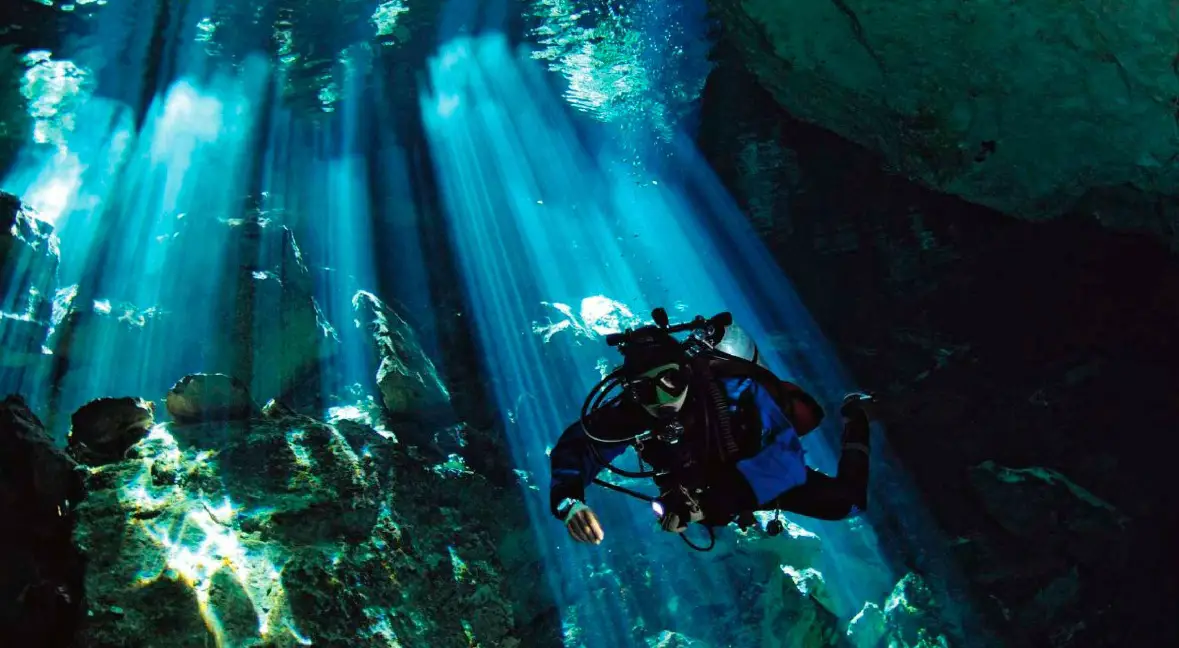
Gran Cenote: crystal-clear waters and stunning formations
Gran Cenote is a popular cenote among divers, known for its crystal-clear waters and remarkable formations. As divers descend into the depths, they are greeted by an underwater paradise adorned with intricate limestone formations and submerged tree roots.
The visibility in Gran Cenote is exceptional, allowing divers to marvel at the diverse ecosystem thriving within its waters. Swimming alongside turtles and schools of fish in this serene cenote is a truly magical experience.
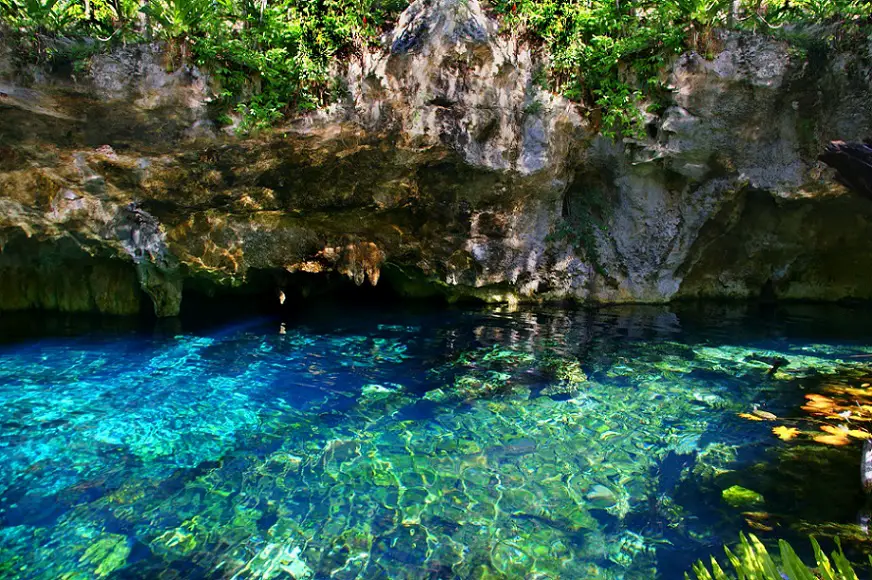
Cenote Angelita: descending into the mysterious “Underwater River”
Cenote Angelita offers a unique and captivating diving experience that feels like venturing into another world. The highlight of this cenote is the “Underwater River,” a phenomenon created by the layering of saltwater and hydrogen sulfide, giving the appearance of a flowing river beneath the surface.
Divers descending into the depths witness an awe-inspiring sight as they transition through this surreal submerged river, surrounded by a mystical and otherworldly atmosphere. The experience of diving in Cenote Angelita is truly unforgettable.
We have another post about places for the best diving in Mexico – Cenotes Azul Playa del Carmen. You can read it by following the link.
Lesser-known diving destinations in Mexico
Venturing beyond the well-known diving destinations, the Sea of Cortez, Veracruz, and Costa Maya offer unique and lesser-explored diving opportunities in Mexico.
Whether you are drawn to the abundant marine life of the Sea of Cortez, the thrill of wreck diving in Veracruz, or the untouched beauty of Costa Maya’s reefs, these hidden gems provide a chance to discover Mexico’s underwater wonders in a more secluded and serene setting.
Prepare to be captivated by the lesser-known diving destinations, where adventure and natural beauty await beneath the waves.
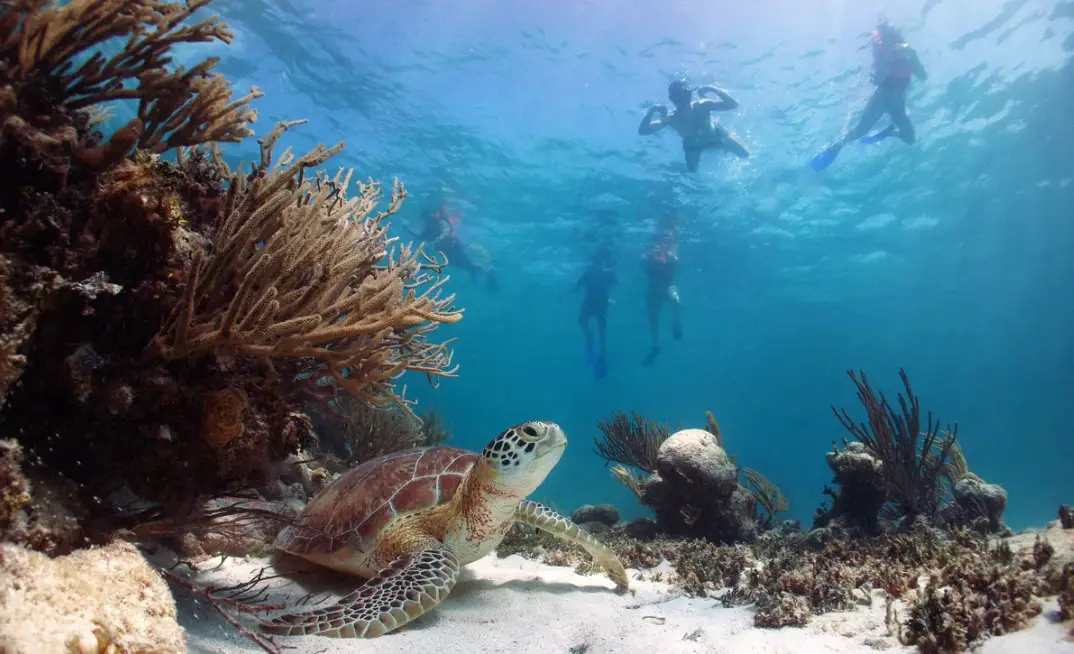
Sea of Cortez: Jacques Cousteau’s “Aquarium of the World”
The Sea of Cortez, also known as the Gulf of California, is a lesser-known diving destination that offers a wealth of underwater treasures. Renowned marine explorer Jacques Cousteau once described this region as the “Aquarium of the World” due to its rich biodiversity.
Diving in the Sea of Cortez unveils a mesmerizing array of marine life, including colorful fish, playful sea lions, dolphins, and even the chance to see whale sharks gather together, or humpback whales.
The nutrient-rich waters and vibrant reefs make the Sea of Cortez a hidden gem for diving enthusiasts seeking a unique and pristine underwater experience.
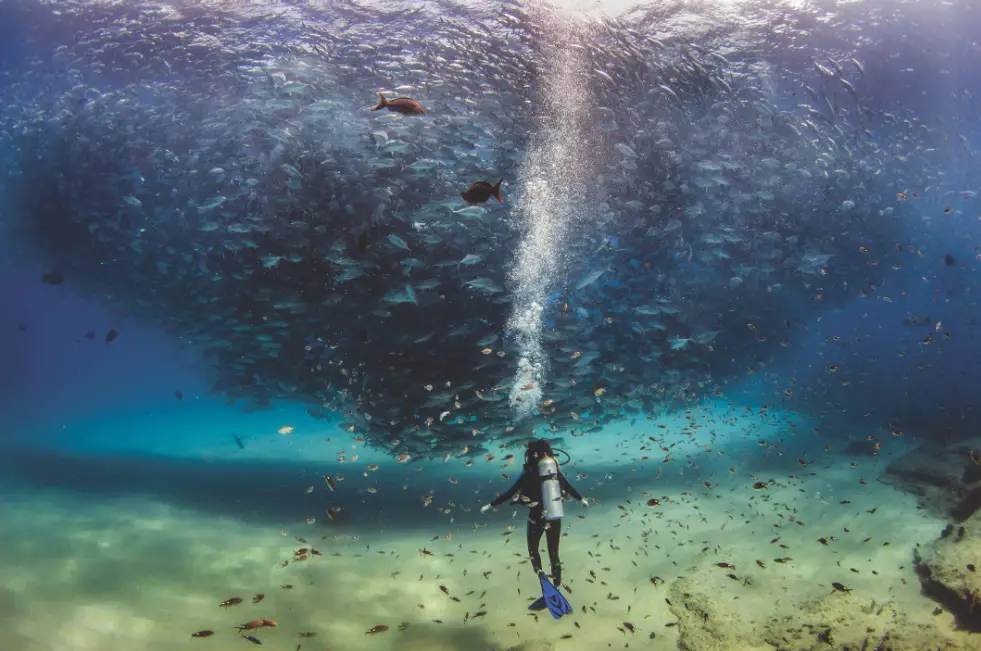
Veracruz: wreck diving and coral pinnacles
The coastal city of Veracruz boasts a fascinating blend of history and underwater exploration. Diving off the coast of Veracruz offers thrilling opportunities for wreck diving, with numerous shipwrecks that have become artificial reefs teeming with marine life.
Exploring these underwater relics provides a glimpse into the maritime history of the region. In addition to wreck diving, Veracruz also offers vibrant reefs, where divers can immerse themselves in a world of colorful corals, tropical fish, and an abundance of marine biodiversity.
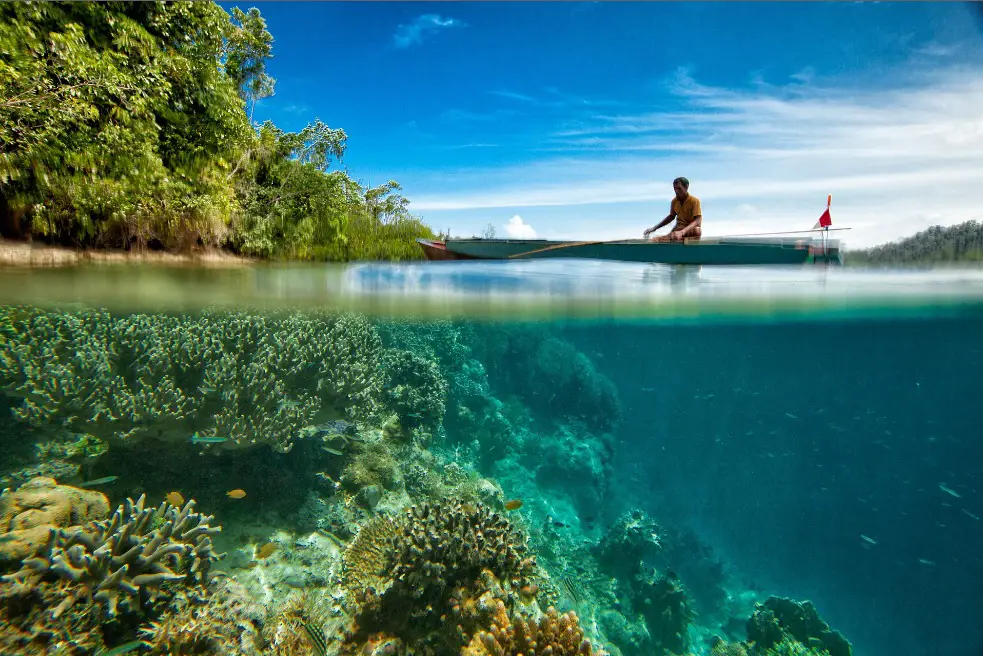
Costa Maya: colorful reefs and primordial beauty
Costa Maya, located on the southern coast of the Yucatan Peninsula, is a hidden gem for divers seeking untouched beauty and pristine diving sites. This tranquil and less crowded destination boasts a variety of dive sites, including vibrant reefs and captivating underwater landscapes.
Divers can encounter a diverse range of marine life, such as turtles, rays, nurse sharks, and an impressive array of reef fish. The clear waters and unspoiled beauty of Costa Maya create a serene and unforgettable diving experience away from the bustling tourist hotspots.
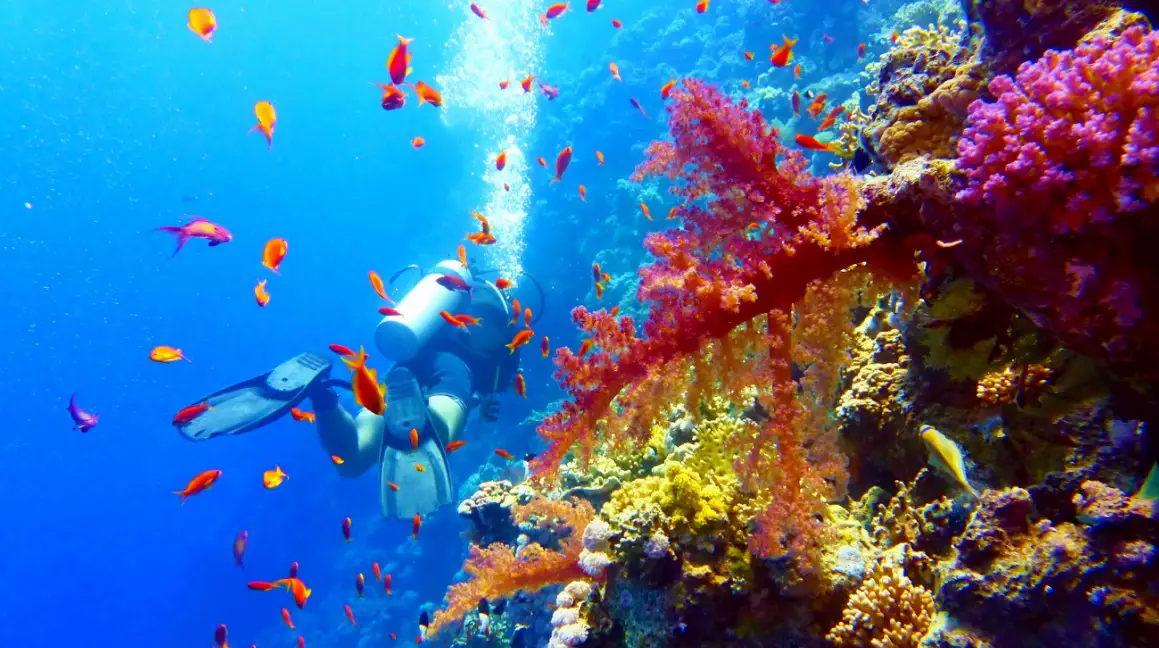
Underrated diving destinations for underwater photography
While Mexico offers well-known diving hotspots, there are also hidden gems that often go overlooked by divers. These underrated diving destinations provide unique experiences and showcase Mexico’s diverse underwater landscapes.
Venturing off the beaten path to these hidden gems of Mexico’s diving destinations offers the chance to explore lesser-known but equally remarkable underwater ecosystems.
Whether it’s encountering whale sharks, exploring untouched coral atolls, or diving alongside playful sea lions, these underrated locations promise unforgettable diving experiences and the opportunity for captivating underwater photography.
Isla Holbox: pristine beauty and so many whale sharks
Isla Holbox is a secluded island off the northern coast of the Yucatan Peninsula, known for its pristine beauty and rich marine life.
Explore the crystal-clear waters surrounding Isla Holbox, which are home to an array of colorful fish, sea turtles, and vibrant reefs.
One of the highlights of diving here is the opportunity to encounter majestic whale sharks, the largest fish in the ocean, during their annual migration between May and September. Capture stunning shots of whale sharks by using a wide-angle lens and ensuring proper exposure settings.
Focus on capturing their distinctive patterns and unique behavior, such as filter feeding near the surface.
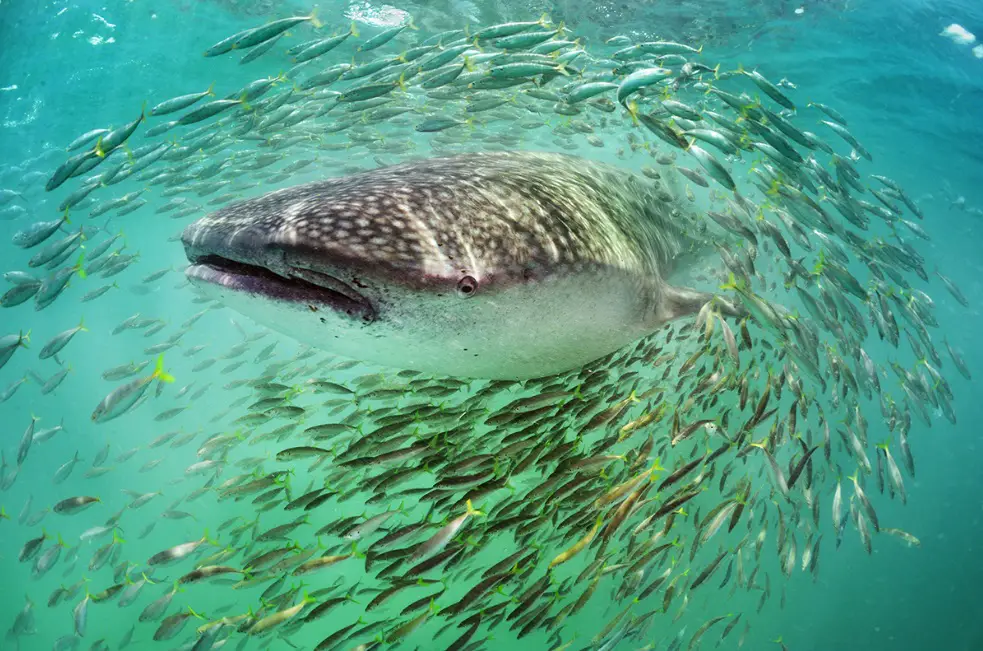
Huatulco: coastal charm and marine biodiversity
Situated on the Pacific coast of Oaxaca, Huatulco boasts a picturesque coastline and an underwater paradise teeming with marine biodiversity. Discover an abundance of marine life, including colorful reef fish, rays, eels, and even the occasional sea turtle or dolphin.
Huatulco offers a variety of dive sites, ranging from reefs to rock formations and underwater canyons, providing divers with diverse and captivating underwater landscapes.
Use a macro lens to capture the intricate details of smaller marine species found in Huatulco’s reefs. Pay attention to lighting conditions and experiment with different angles to capture the vibrant colors and textures of the underwater world.
Banco Chinchorro: untouched coral atoll and shipwrecks
Banco Chinchorro is an untouched coral atoll located off the coast of Quintana Roo, near the border with Belize. It is a protected biosphere reserve and home to a diverse ecosystem.
Dive into the crystal-clear waters of Banco Chinchorro and explore its thriving brain coral reefs, which are said to be among the healthiest in the Caribbean. Additionally, the area is known for its intriguing shipwrecks, providing an opportunity for unique underwater photography and exploration.
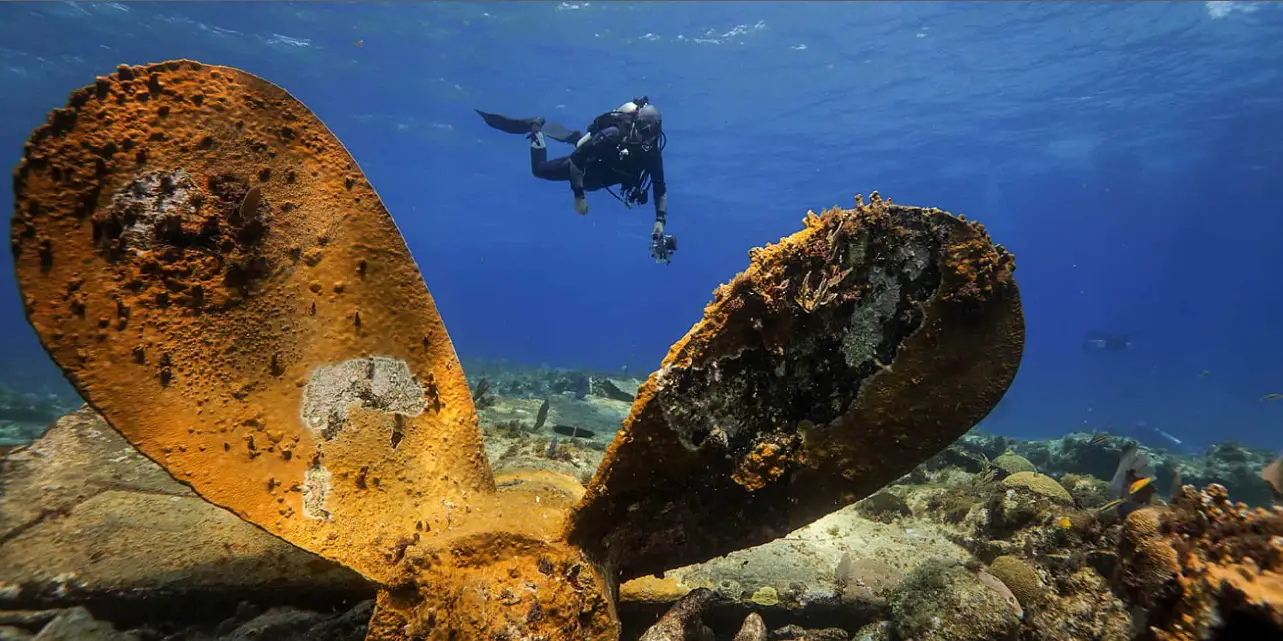
Capture the juxtaposition of vibrant coral growth and the remnants of the sunken ships. Experiment with wide-angle shots to encompass both the marine life and the wrecks themselves, and pay attention to details such as marine species taking refuge in the wrecks.
Isla Espíritu Santo: marine reserves and secluded bays
Isla Espíritu Santo, located in the Sea of Cortez, is a UNESCO World Heritage Site and a protected marine reserve, offering pristine diving conditions. Immerse yourself in the calm waters surrounding Isla Espíritu Santo, known for its impressive marine biodiversity.
Discover a variety of underwater landscapes, including rocky reefs, sandy bottoms, and seagrass meadows. Encounter playful sea lions, schools of colorful fish, and, if you’re lucky, even dolphins and whales.
Be prepared for encounters with sea lions by using a fast shutter speed to capture their agile movements. Utilize a wide-angle lens to capture the grandeur of the marine reserve’s diverse underwater topography and experiment with shooting at different depths to showcase the variety of marine life present.
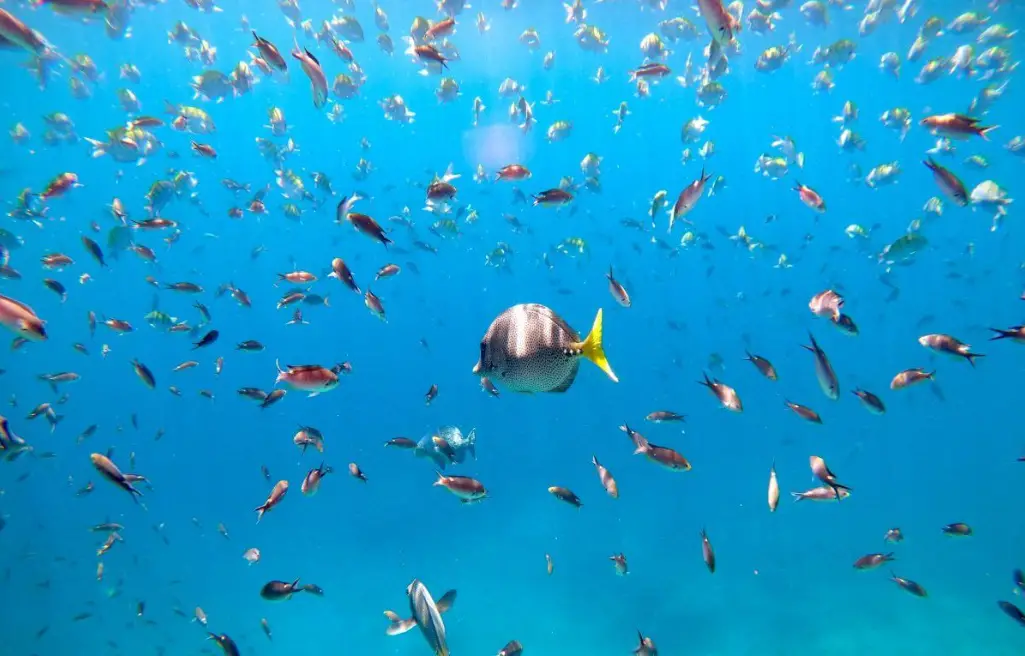
Practical considerations for diving in Mexico
By considering the best time to visit, prioritizing safety, choosing reputable operators and guides, and planning for equipment and transportation, you can ensure a smooth and enjoyable diving experience in Mexico.
Remember to always follow local regulations, respect the marine environment, and prioritize your safety while exploring the underwater wonders of Mexico.
Best time to visit for optimal diving conditions
Mexico offers year-round diving opportunities, but the best time to visit varies depending on the specific diving destination.
Consider the following factors when planning your diving trip:
- Weather: Research the climate and weather patterns of the region you intend to dive in. Look for periods with stable weather conditions, minimal rainfall, and calm seas.
- Water temperature and visibility: Different regions in Mexico have varying water temperatures and visibility levels throughout the year. Check the seasonal variations to choose a time when the water conditions align with your comfort and visibility preferences.
- Marine life activity: Certain times of the year coincide with significant marine life events, such as migrations, mating seasons, or the presence of specific species. Research the marine life activity in your chosen diving location to plan your visit accordingly.
Safety precautions and certifications required
Ensure you possess the appropriate diving certifications for the type of diving you plan to undertake. Mexico requires divers to have a recognized certification from a reputable diving agency, such as PADI or SSI.
Some locations may have strong currents or advanced diving conditions, which may require more experience and training. It is recommended to have diving insurance that covers medical expenses and evacuation in case of emergencies.
Verify if your insurance policy includes diving-related activities or consider purchasing specialized dive insurance.
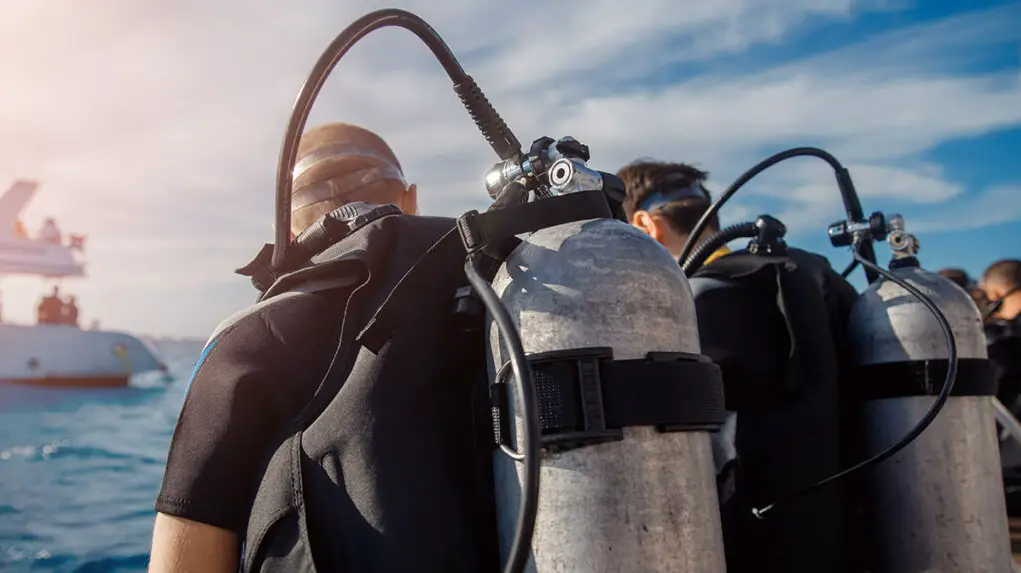
Choosing reputable dive operators and guides
Conduct thorough research on dive operators and guides in your chosen diving destination.
Read reviews, check their certifications, and inquire about their safety record and adherence to responsible diving practices. Seek recommendations from fellow divers, dive forums, or local dive communities.
Their firsthand experiences can provide valuable insights into reputable dive operators and guides. Ensure that the dive operator follows safety protocols, provides well-maintained diving equipment, and has experienced dive professionals who prioritize diver safety.
Equipment rental and transportation options
If you do not have your own diving equipment or prefer not to carry it, inquire about equipment rental options. Many diving destinations in Mexico have dive shops that offer rental services, but it’s advisable to book in advance to ensure availability.
If you plan to rent equipment, inspect it before your dive to ensure it is in good condition, fits properly, and functions correctly. Verify that the rental shop follows proper maintenance procedures. Determine the transportation options available to reach dive sites and move around within the country. Some dive operators provide transportation, while others may require you to arrange your own.
Conclusion
Mexico stands as a remarkable diving destination, offering a wealth of underwater treasures and diverse marine ecosystems.
From the breathtaking Caribbean coast with its vibrant reefs and cenotes to the enigmatic Pacific coast with its sea lions and hidden gems, Mexico’s underwater world captivates divers of all levels.
Would you like to know more on the best diving in Mexico? We recommend you to read another article. Please click on the link.
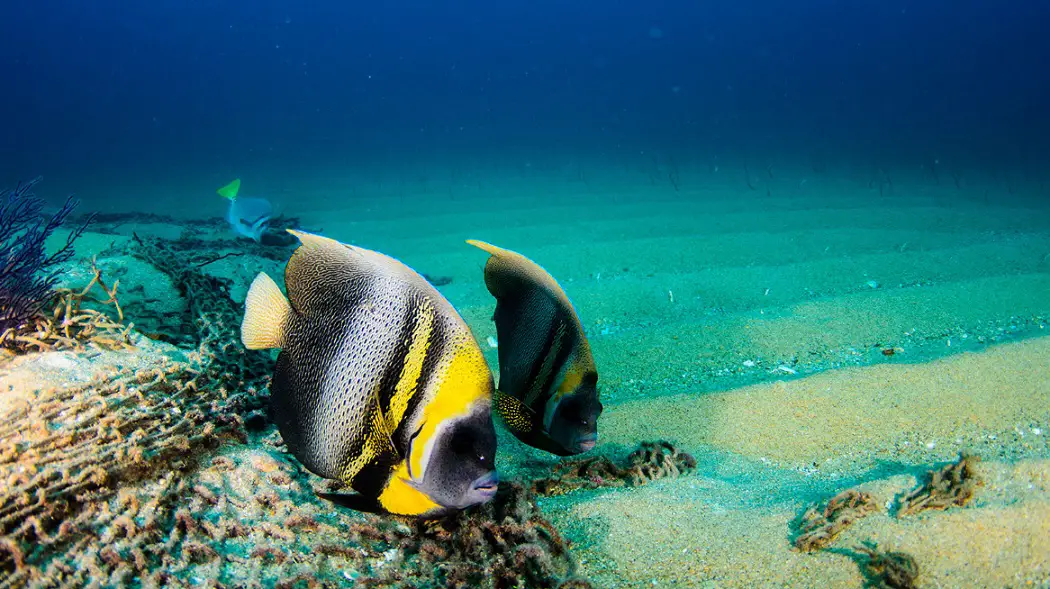
FAQ
Which city is famous for diving in Mexico?
Cozumel is widely recognized as one of the most famous diving destinations in Mexico. It is renowned for its pristine reefs, vibrant marine life, and excellent diving conditions.
Cozumel attracts divers from around the world due to its crystal-clear waters and the abundance of marine species.
What is the best month to dive in Mexico?
The best month to dive in Mexico can vary depending on the specific diving destination. However, generally, the months from May to September are considered optimal for diving in Mexico.
During this period, water temperatures are comfortable, visibility is generally good, and several marine species, such as whale sharks and sea turtles, are more commonly encountered.
Is Mexico good for scuba diving?
Yes, scuba diving in Mexico is an excellent choice. With its extensive coastline along the Caribbean Sea and the Pacific Ocean, Mexico offers a wide range of scuba dive opportunities.
Diverse underwater ecosystems make scuba diving in Mexico a popular option among enthusiasts of all levels.
Best scuba diving spots include Cozumel, Socorro Islands, Playa del Carmen, Guadalupe Island, Banco Chinchorro, etc.
Is Puerto Vallarta good for diving?
While Puerto Vallarta is not as renowned for diving as some other Mexican destinations, it still offers opportunities for diving enthusiasts.
The nearby Marietas Islands are known for their unique underwater rock formations and diverse marine life.
Novice and experienced divers can explore caves, tunnels, and reefs, encountering colorful fish, rays, and even the occasional humpback whale during the winter months.



